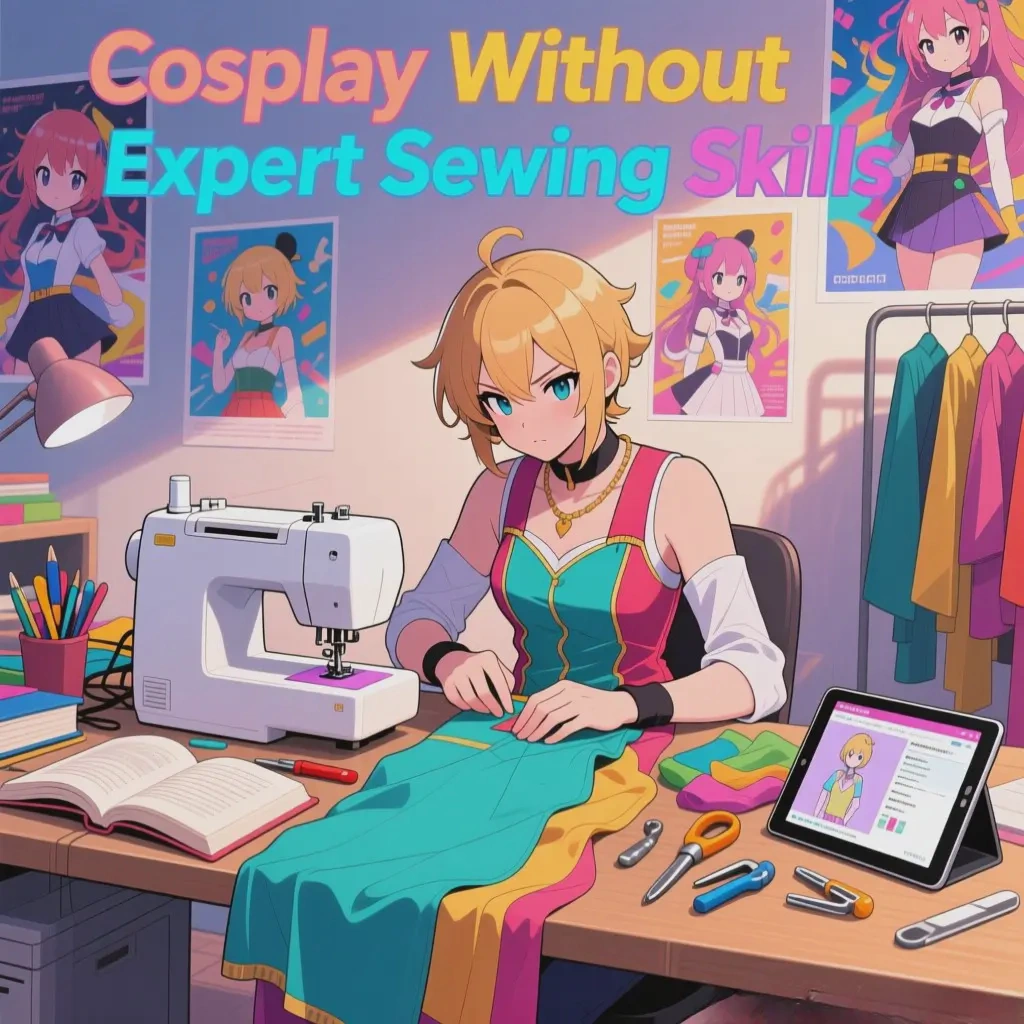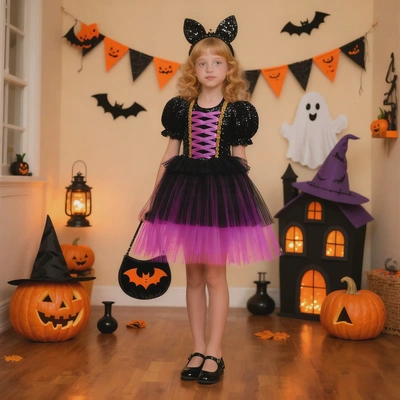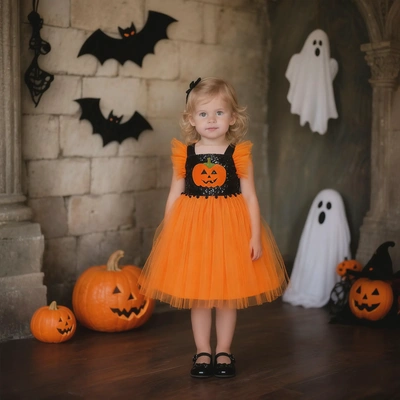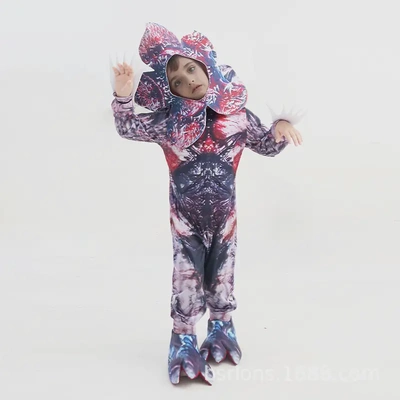Do I Need to Be an Expert Sewer to Make a DIY Anime Cosplay Costume?
Introduction
The world of DIY anime cosplay costumes is an exciting one, filled with creativity and self-expression. However, many aspiring cosplayers wonder if they need to be expert sewers to bring their favorite anime characters to life. The good news is that while advanced sewing skills can be an advantage, they are not a prerequisite for creating a great cosplay costume.
1. Basic Sewing Skills Can Suffice
1.1 Fundamental Stitches
- Straight Stitch: One of the most basic and essential stitches, the straight stitch is used for joining fabric pieces together. Whether you're sewing a seam on a simple tunic for a fantasy-themed anime character or attaching sleeves to a dress, a straight stitch can get the job done. Even with a basic sewing machine or by hand-sewing, this stitch is relatively easy to master. For example, when creating the main body of a cosplay outfit, like a jumpsuit for a sci-fi anime character, running a straight stitch along the edges to connect the fabric panels is a straightforward task.
- Zig-Zag Stitch: This stitch is great for finishing raw edges and preventing fraying. In cosplay, where costumes often have exposed edges, such as the bottom of a cape or the edges of a collar, a zig-zag stitch can add durability. It can also be used for attaching stretchy fabrics or for creating decorative effects. For instance, if you're using a stretchy fabric for a form-fitting cosplay top, a zig-zag stitch will allow the fabric to stretch without the seam breaking.
1.2 Simple Seam Finishes
- Overcast Seam: An overcast seam is a basic way to finish the raw edges of fabric. It involves folding the edge of the fabric over once or twice and then sewing it down. This is a quick and easy method that doesn't require advanced sewing knowledge. It's commonly used in cosplay for items like the hems of skirts or the edges of fabric belts. For example, when making a long, flowing skirt for an anime princess cosplay, an overcast seam can be used to finish the bottom edge neatly.
- French Seam: While a French seam is a bit more advanced than an overcast seam, it's still within the reach of beginners. It encases the raw edges of the fabric, creating a clean and professional-looking finish. This can be useful for cosplay costumes where a more polished look is desired, such as a formal-wear-inspired anime costume. For instance, a French seam can be used on the side seams of a cosplay dress to give it a high-quality appearance.
2. Alternative Construction Methods
2.1 No-Sew Options
- Fabric Glue: Fabric glue can be a great alternative to sewing for simple cosplay projects. It can be used to attach small details like patches, appliques, or trims. For example, if your anime character has a decorative patch on their jacket, you can use fabric glue to stick it in place. Some fabric glues are strong enough to hold up well, even with regular wear.
- Heat-Bonding Interfacing: Heat-bonding interfacing can be used to attach fabric pieces without sewing. You simply place the interfacing between the two fabric layers, apply heat with an iron, and it bonds the fabrics together. This method is useful for creating stiffened areas, like collars or cuffs, in a cosplay costume.
2.2 Using Pre - Made Items
- Upcycling and Modifying Clothing: Instead of starting from scratch, you can upcycle existing clothing items. For example, you can take an old white shirt and dye it the color of your anime character's top. Then, you can add details like buttons, lace, or embroidery to transform it into a cosplay piece. You can also modify pre - made clothing items, such as cutting the sleeves off a long - sleeved shirt to create a short - sleeved version for a different character design.
- Buying Costume Kits: There are many cosplay costume kits available in the market. These kits come with pre - cut fabric pieces and sometimes even instructions on how to assemble the costume. While they may still require some basic sewing or assembly skills, they can be a great starting point for beginners.
3. Learning and Improving Along the Way
3.1 Online Tutorials and Resources
- YouTube Channels: There are numerous YouTube channels dedicated to cosplay and sewing. Channels like "Cosplay Tutorials" and "Kamui Cosplay" offer step - by - step guides on making various cosplay costumes, from simple to complex designs. These tutorials often explain sewing techniques in an easy - to - understand manner, making it accessible for beginners to learn new skills as they work on their cosplay projects.
- Blogs and Forums: Cosplay blogs and forums are also valuable resources. Websites like Cosplay.com have forums where cosplayers share their experiences, ask questions, and offer advice. You can find threads specifically about sewing techniques for cosplay, as well as tips on overcoming common challenges.
3.2 Practice and Patience
- Starting with Simple Projects: Begin with simple cosplay projects to build your confidence and skills. For example, start by making a basic accessory like a headband or a belt. As you become more comfortable with the sewing process, you can gradually move on to more complex costumes. Each project is an opportunity to learn and improve your sewing abilities.
- Taking Your Time: Don't rush the process. Cosplay is about creativity and self-expression, and it's okay if it takes a while to complete a costume. Taking the time to measure, cut, and sew accurately will result in a better-quality final product.
4. FAQ
Q: What if I make a mistake while sewing my cosplay costume?
A: Mistakes are a part of the learning process. If you make a mistake, such as sewing a seam in the wrong place, you can usually fix it. For machine-sewn seams, you can use a seam ripper to remove the stitches and start over. For hand-sewn seams, you can carefully unpick the stitches. If the mistake is more significant, like cutting the fabric wrong, you may need to get more fabric or find a creative way to cover up the error, such as adding a patch or an embellishment.
Q: Can I still make an accurate cosplay costume with basic sewing skills?
A: Absolutely. With basic sewing skills and careful planning, you can create an accurate cosplay costume. Focus on the key elements of the character's design and use your skills to replicate them as best as you can. You can also use alternative construction methods and add details through non-sewing techniques to enhance the accuracy of the costume.
5. Conclusion
You do not need to be an expert sewer to make a DIY anime cosplay costume. With basic sewing skills, alternative construction methods, and a willingness to learn, you can bring your favorite anime characters to life. The journey of creating a cosplay costume is as important as the final result, and it offers an opportunity to develop your skills and express your creativity.





